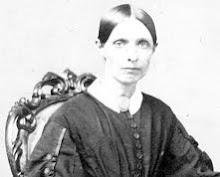One of the shots I had taken was of a cemetary we pass on Swift Run Road. It has always intrigued me-the facade is very nicely kept up, with fresh coats of paint, a beautiful stone wall and nicely manicured grass.

I was curious about the history behind it and googled it, but nothing really came up with the exception of a local registry of cemetaries in the area with locations. (If someone out there has any information, I would love to learn more about this place!) While looking at the registry list I noticed another interesting cemetary on Belmont Road in Gettysburg called "Black's Graveyard." My husband and I had always wondered about the story behind thatas well.

A little investigating on that turned up some better information. I found that although the earliest marked grave there is 1746, it is likely that it was used as a burial ground even before 1740, and as late as 1870 the graveyard was still used as a burial ground.
Robert Black, the father of five sons who served in the American Revolution Army, was buried here in 1760, having died at the age of forty-four years. He had come with his father, John Black, from the North of Ireland to Marsh Creek about 1732-1736. John Black, then, would have been one of the earliest settlers of the area and possibly other members of his family may be buried here in unmarked graves or in graves marked only by field stones. Many of the graves were never marked. Members of the pioneer family, Foster were buried here, but no monument remains in their memory. Colonel Hance Hamilton, a pre-Revolutionary soldier referred to as the “old Indian fighter”, and his wife Ann were also both buried here, but his body was later moved and no stone marks Ann’s grave. Many graves were marked only by field stones which carry no inscriptions. Through the years, many graves stones have disappeared or have been destroyed or defaced. After the establishment of Evergreen Cemetery in 1856, many bodies originally interred in the Upper Marsh Creek graveyard were exhumed and reinterred in Evergreen Cemetery or other cemeteries. Between 1856 and 1870 the remains of many of the early families of the church and community were removed: Buchanan, Cobean, Edie, Ewing, Gettys, Hamilton, Hays, Horner, Jenkins, McConaughy, McPherson, Russell, Smith.

Among those still buried in the graveyard are several veterans of the American Revolutionary War and at least two of the men buried in Black’s Graveyard were veterans of the War of 1812.


















1 comment:
My family has people buried in Blacks graveyard. They are Scotch Irish and 140 families came over about 1732 with Capt. Hance Hamilton to fight the Indians and settle the land. If you research the Manor of Maske you will find out a lot more about this area and its people. Sincerely Jerry Armstrong
Graugeist@comcast.net
Post a Comment